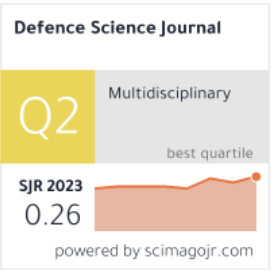HANDOVER FEASIBILITY FOR CELLULAR-CONNECTED UNMANNED AERIAL VEHICLE (UAV)
Abstract
The ability of unmanned aerial vehicles (UAVs) can be unlocked to fly beyond the line-of-sight (LOS) by utilising current cellular networks. The configuration of cellular network antennas is primarily optimised for ground users, with the antennas tilted downward. This causes frequent handover when cellular-connected UAVs fly at high altitudes. To this end, this paper presents the investigation of handover feasibility for cellular-connected UAVs at high altitudes using a simulation software known as Radio Mobile. This investigation establishes the reliable operating limits of UAVs by quantifying the handover performance of UAVs through observation of the received signal strength (RSS) value when the handover is initiated. Considering a suburban setting that is modelled by a macro-cellular network, the results obtained show that a UAV that takes off at horizontal distance of 100 m away from the serving cellular base station (BS) gives the best RSS performance as compared to horizontal distances of 50, 200, 500 and 750 m from the serving BS. Such performance is due to better reception from the down tilted antenna at the BS. Therefore, it is recommended that UAV operators fly their UAVs at a distance of at least 100 m away from the serving BS in a macro-cellular network to ensure handover feasibility of UAV.
Keywords: Cellular-connected unmanned aerial vehicle (UAV); received signal strength (RSS); handover; macro- and micro-cellular network; 4G.
Description
Indexed in scopushttps://www.scopus.com/authid/detail.uri?authorId=57203894918 |
Article metrics10.31763/DSJ.v5i1.1674 Abstract views : | PDF views : |
Cite |
Full Text Download Download
|
Conflict of interest
“Authors state no conflict of interest”
Funding Information
This research received no external funding or grants
Peer review:
Peer review under responsibility of Defence Science Journal
Ethics approval:
Not applicable.
Consent for publication:
Not applicable.
Acknowledgements:
None.





